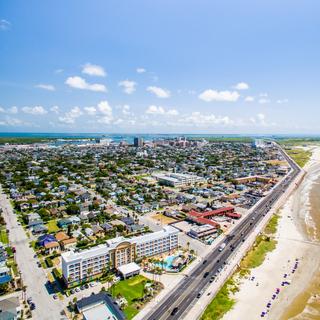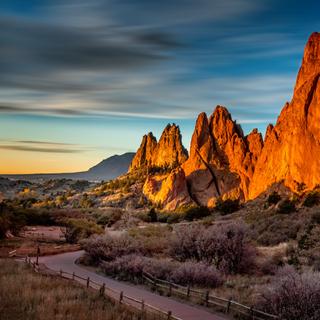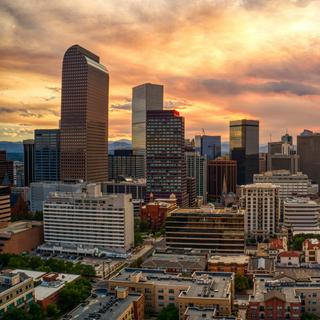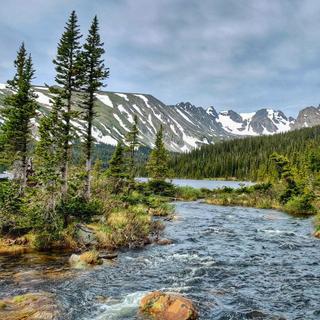Wichita Falls, TX weather and climate in 2025
Day
13 °C
Night
-1 °C
Sea
0 °C
Precipitation
32 mm
in month
Rainy days
5 days
in month
Daylight
10 hours
average
Sunshine
6 hours
average
Humidity
66 %
Weather charts for Wichita Falls, TX
Find more destinations like this
Closest destinations for Wichita Falls, TX
Closest cities for Wichita Falls, TX
Weather overview for Wichita Falls, TX
Weather overview
Wichita Falls, TX, boasts a climate of extremes throughout the year. With scorching summer highs where temperatures often soar above 33 °C (91 °F) in June, to chilly winter lows that can dip to -1 °C (29 °F) in January, this region presents a diverse weather profile. The wettest month is typically May with an astounding 104 mm (4.11 in) of precipitation, while the driest month is January with a mere 32 mm (1.26 in) of rainfall. Winters can be windy and dry, whereas summers are frequently hot with occasional thunderstorms. The transition seasons, spring and fall, offer pleasant temperatures and are typically less humid than the peak of summer.
January weather
January in Wichita Falls brings the coldest nights of the year, with temperatures as low as -1 °C (29 °F). Precipitation is relatively low this month with only 32 mm (1.26 in) and there tends to be about 5 days of rainfall. With an average daytime temperature of 13 °C (55 °F), you might need a warm jacket when stepping outside.
February weather
February offers slightly warmer days in Wichita Falls, with average high temperatures reaching 15 °C (59 °F). Rainfall increases slightly to 46 mm (1.79 in) spread over 6 days on average. As the city heads towards spring, the nights remain cool, but less harsh than in January.
March weather
March sees Wichita Falls warming up with an average high of 20 °C (68 °F), though nights can still be cool. The amount of rainfall continues to rise, with an average of 58 mm (2.30 in) and roughly 7 days classified as wet days. The wind speed also picks up, averaging 5, which can make the weather feel cooler than it is.
April weather
April offers a delightful spread of warmth as Wichita Falls experiences average high temperatures of 25 °C (76 °F). However, the nights continue to cool down to an average of 10 °C (50 °F). The month can be windy, with an average wind speed of 5, and rainy days become more frequent with about 7 days of rainfall.
May weather
May ushers in the highest amount of precipitation for the year, with 104 mm (4.11 in) expected to fall over an average of 10 days. The daytime highs become consistently warm, hitting an average of 29 °C (84 °F), while nights start to feel balmy with an average low of 16 °C (60 °F).
June weather
June is when the heat sets in with temperatures soaring to an average high of 33 °C (91 °F), marking the onset of the hot Texan summer. The amount of rain slightly decreases from May to about 98 mm (3.86 in), spread over 9 days. The lowest humidity of the year at 56 % may make the heat more bearable.
July weather
July offers the highest daytime temperatures of the year, peaking at an average of 36 °C (97 °F). Nights offer a slight reprieve at around 22 °C (72 °F). The number of wet days drops to 6 days, and the rainfall also decreases to 50 mm (1.97 in) of precipitation.
August weather
August in Wichita Falls remains extremely hot with a near identical average high temperature of 36 °C (97 °F) to July. The night temperatures are still warm, averaging 22 °C (71 °F). Rainfall, while not as scant as in July, averages 64 mm (2.50 in) across 7 days.
September weather
September sees the beginning of the decline in the heat with average daytime highs cooling slightly to 32 °C (89 °F). The evenings become more pleasant with an average low temperature of 17 °C (63 °F). The amount of sunshine starts to decrease as fall approaches.
October weather
October offers a noticeable drop in temperature with averages ranging from 11 °C (52 °F) at night to 26 °C (78 °F) during the day. Lighter rainfall compared to earlier months with an average of 79 mm (3.10 in) falling over 7 days, coupled with less humidity and gentle breezes, make for comfortable weather.
November weather
As November rolls in, the city experiences cooler temperatures with daytime highs averaging 19 °C (66 °F). At night, the temperatures dip to a cool 5 °C (41 °F). The rainfall is lesser with 44 mm (1.72 in), and there are approximately 5 days of wet days.
December weather
December marks the beginning of winter with cooler days at an average high of 13 °C (56 °F) and chilly nights that can fall to just 0 °C (31 °F). The rain becomes scarcer with only 42 mm (1.64 in) expected, and the average number of wet days dropping to 6 days.
FAQs
How many layers should I wear when going out in Wichita Falls during January?
In January, you should consider layering your clothing in Wichita Falls. A thermal base layer, followed by a sweater and a warm coat, would be suitable to handle the average low night temperature of -1 °C (29 °F).
What kind of outdoor activities can be enjoyed in Wichita Falls during February?
Outdoor activities in Wichita Falls during February can be quite pleasant, particularly mid-day when the temperature averages 15 °C (59 °F). It's a great time for hiking or walking in the park, just make sure to dress in layers as evenings can still be cool.
Is March a windy month in Wichita Falls?
Yes, March is considered a windy month in Wichita Falls, with average wind speeds around 5. This can add a chill to the air, so a windbreaker might come in handy.
Can I start wearing shorts in Wichita Falls in April?
With daytime temperatures reaching an enjoyable 25 °C (76 °F) in Wichita Falls, you can certainly start wearing shorts in April, especially during the warmer parts of the day.
What's the weather typically like in Wichita Falls during May?
May is known for its warm and somewhat unpredictable weather in Wichita Falls, with temperature highs averaging 29 °C (84 °F) and significant rainfall. You can expect variable conditions that include the potential for thunderstorms.
How hot does it get in Wichita Falls in June?
June in Wichita Falls gets quite hot, with temperatures often reaching and surpassing an average high of 33 °C (91 °F). It's the beginning of the intense summer heat, so staying hydrated and cool is key.
Is July the hottest month in Wichita Falls?
Indeed, July is typically the hottest month in Wichita Falls, with the temperature averaging a sweltering 36 °C (97 °F) during the day. The heat can be intense, so outdoor activities should be scheduled for cooler times of the day or in shaded areas.
Are the nights in Wichita Falls cooler in August compared to the daytime?
Nights in Wichita Falls during August offer a bit of relief from the searing heat of the day, but they remain warm with temperatures around 22 °C (71 °F).
Do I still need to run my air conditioner in Wichita Falls during September?
With daytime highs still reaching 32 °C (89 °F) in Wichita Falls during September, it's likely you would still need to run your air conditioner to stay comfortable, especially during the day.
What is the weather like in Wichita Falls in October?
October in Wichita Falls is characterized by cooler temperatures, less humidity, and gentle breezes, making it a comfortable month with average daytime temps of 26 °C (78 °F) and cooler nights at 11 °C (52 °F).
Can I wear comfortable fall clothing in Wichita Falls during November?
November's cool conditions in Wichita Falls are perfect for comfortable fall clothing like sweaters and light jackets, especially with the average daytime high of 19 °C (66 °F).
Should I bundle up in Wichita Falls in December?
Yes, bundling up is advisable in Wichita Falls during December as the average highs are only 13 °C (56 °F) and nighttime lows dipping to around 0 °C (31 °F).
We make the most from 40 years of historical weather data to predict the best weather conditions.
Deciding on where to go for a holiday is hard sometimes. Get inspired by the most popular destinations.
We aggregate data from combining multiple weather sources to ensure accuracy of the highest order.







